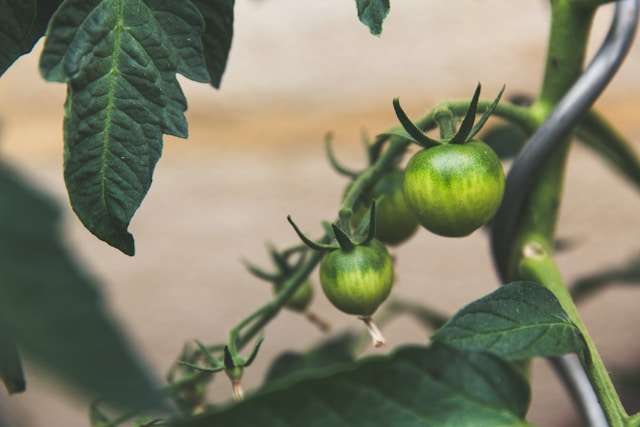Gardening is beneficial because it provides a way to eat more fresh fruits and veggies, allows individuals to determine if there are fertilizers or pesticides on their food, and allows you to determine when to harvest. Whether you’re growing tomatoes or herbs, it can be tricky to decide when it’s time to pick your crops.
If you want to learn more about knowing when to harvest, there are several items you can look for in your veggies, fruits, and herbs to determine when it’s time to harvest. It can be tricky to get the timing right, but it’s critical to make the correct choice to maximize your bounty. Let’s dive into a few indications of harvest time.
Look for Ripeness
Fruits and vegetables are a critical part of any diet, offering benefits for cardiovascular disease, blood pressure, cancer, diabetes, weight, vision, gastrointestinal health, and more. If you want to gather fruits and veggies from your small garden, check for ripeness first. An unripe fruit or veggie won’t taste ideal.
No two foods ripen at the same rate, so here are a few general considerations to go by:
- Go for a vibrant color
- Most ripe options will have a slight, pleasant smell
- Avoid wrinkles and mold
- Should easily come off the vine/plant
Of course, you won’t get the same experience with two foods. It’s best to research what ripeness looks like for the specific plant you’re growing before starting, whether you have a small veggie bed with tomatoes or an herb garden with cilantro and basil.
Related: How to Care For Your Garden While on Vacation

Check Out Frost Predictions
Frost is one of the biggest obstacles in growing a garden. Seniors should wait to plant their crops until the end of the final spring frost, and your plants should reach a fully mature status by the time the first frost rolls around in the fall. This act requires some planning on the front end to determine when it’s time to grab your growth.
Once the temperature falls, the growth of plants will slow, and they could die if you leave them alone in the elements for too long. Unless you’re willing to invest in accessories for your garden to keep the plants active in the winter, we’d advise picking everything once the cold starts invading the air.
Look at the Garden Every Day
One of the easiest ways to keep tabs on your plants and prepare for the correct time of harvest is to watch your plants every day. Even if you have a tiny garden plot, schedule a few times a day when you can go out and check the garden. Usually, this action will line up with watering time unless you have an automated system.
When checking the garden, look for items like the following:
- Ripeness of the plants
- Molding
- Animals eating plants
- Status of the leaves
- Number of fruits and veggies
These details will help determine if it’s time to harvest.
Always see how the plants are doing, if they are being eaten by the natural world, and if they are succumbing to rot. It should be simple to tell when it’s proper to gather your plants and bring them home for your enjoyment.
Know Bigger Isn’t Always Better
Size is often an indicator of whether or not it’s time for a vegetable or fruit to be picked for the harvest. After all, it starts as a smaller version of itself and eventually grows from a green sprout into a colorful vegetation. However, bigger isn’t always better when all things come to pass.
Keep an eye on your fruits and veggies as they grow. Check for firmness, depending on the veggies. If they get too large, the exterior can become firm, tough, and wildly unpleasant for eating. This is the case with veggies like squash or cucumber.
With some plants, like tomatoes, bigger is better as long as the food doesn’t get too gushy along the way. Know what you’re looking for and don’t wait too long to harvest the plants.
Related: 10 Tips and Tricks for a Beautiful Garden

Pick the Correct Time of Day
Believe it or not, there is an appropriate time of day to pick your bountiful harvest. Ideally, most fruits and vegetables are best when they come off the plant in the early hours. In the morning, they have all the moisture they lost in the heat, which provides them the best state of being fresh off the vine.
If you don’t have time right in the morning, consider harvesting your vegetables late into the evening. They’ll cool off a little from the sun, though they will still need refrigeration from the intense heat.
Know the General Time Frame
There is a typical harvest season for each plant, state, and country. Even if you have a small garden filled with herbs and small vegetables like cherry tomatoes, it’s helpful to know the approximate time frame, so you know when food must go in the ground and when it will come out.
It can be tricky to get this timing right, so start with a few plants at a time to ensure you get the timing right. As you master the process with your small garden bed, work your way up with plants you’re more comfortable within the garden.
Final Thoughts on the Season’s End
According to one study, gardening can have ample benefits, from sharpening the mind to allowing better physical fitness for the individual in charge of the garden. We hope this information is beneficial if you want to glean the rewards from this system. With the right harvest time under your belt, you will have ample food in no time.
We hope this information is helpful as you prepare to make your final harvest of your fresh-grown fruits and vegetables. It might be tricky the first few harvests, but you’ll get the hang of it after a while. No matter how small your garden is, you can have a bountiful harvest that you and anyone else around you will enjoy.
You May Also Enjoy: The 7 Best Gardening Tools (For Senior Gardeners)


















